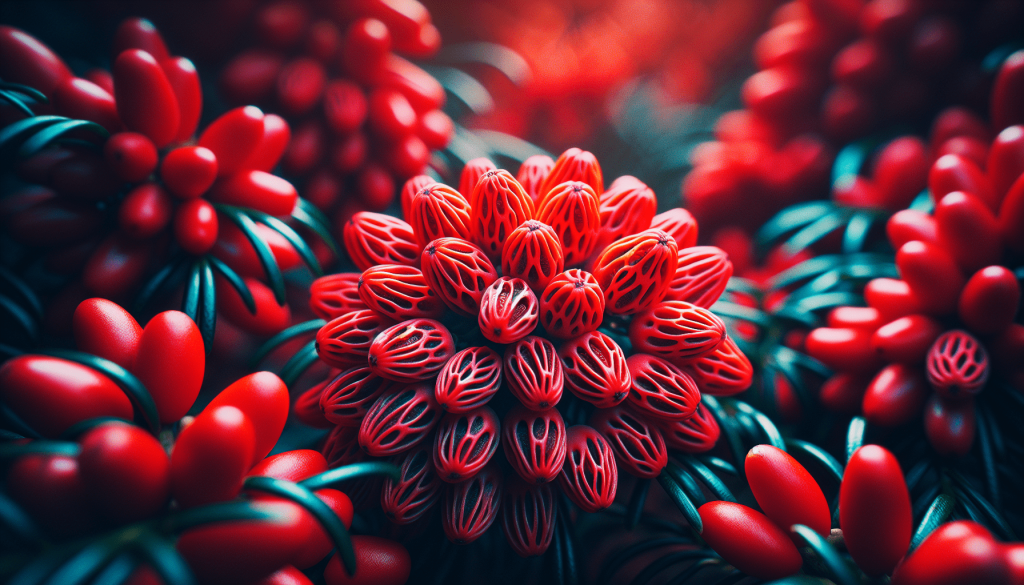This post may contain affiliate links. As an Amazon Associate, we may earn commissions from qualifying purchases.
Have you ever wondered if the Yew tree, known scientifically as Taxus baccata, is poisonous? It’s a reasonable question, especially if you live in a region like the United Kingdom where Yew trees are a common sight. Understanding the potential risks posed by these fascinating trees can be crucial for both humans and animals.

Introduction to Taxus Baccata
Yew trees are evergreen conifers that are native to Europe, northwest Africa, and southwest Asia. They are known for their longevity and can live for thousands of years. The Yew tree typically boasts a dark green, dense foliage, red berry-like fruits, and brown, peeling bark. While its aesthetic features make it an attractive addition to parks and gardens, it’s essential to be aware of the potential dangers associated with it.
What Makes Yew Toxic?
Almost all parts of the Yew tree are poisonous, including its leaves, seeds, and bark. The primary toxic components are alkaloids known as taxines. Taxines interfere with the normal functioning of the heart and can be fatal if ingested in substantial quantities.
The only part of the Yew that is not toxic is the fleshy, red part of the aril surrounding the seed. However, it’s still risky because the seed itself remains poisonous.
The Extent of Yew Toxicity
Yew trees pose a danger not only to humans but also to livestock and pets. The level of toxicity can vary depending on the species of Yew, but the effects are generally similar. A small amount ingested can cause severe symptoms, and in some cases, may be fatal.
Animal species most affected include:
- Horses
- Cattle
- Dogs
- Cats
Identifying the Yew Tree
Proper identification of a Yew tree is crucial. The key characteristics of this tree include:
| Part of the Tree | Description |
|---|---|
| Leaves | Dark green, flat, needle-like, and arranged spirally, but twisted at the base to make them appear two-ranked. |
| Bark | Reddish-brown, thin, and flaky with a rough texture. Over time, it may peel off in irregular patches. |
| Berries | Bright red, fleshy, cup-like structures called arils enclosing a single seed. |
Knowing these attributes can help you identify a Yew tree and take necessary precautions.
Variations and Look-alikes
While Taxus baccata is the most commonly found species, several other varieties exist. Each species has its unique features, but the toxicity remains consistent across them.
- Irish Yew (Taxus baccata ‘Fastigiata’): Upright and columnar in shape.
- Japanese Yew (Taxus cuspidata): Often used in landscape gardening and also highly toxic.
Some trees and shrubs may resemble Yew in appearance but are not toxic. Taking time to correctly identify the tree can make a significant difference.
Symptoms of Yew Poisoning
Recognizing the symptoms of Yew poisoning can be lifesaving. Here’s a breakdown of what to look out for:
In Humans
-
Early Symptoms:
- Nausea
- Vomiting
- Dizziness
- Diarrhea
-
Severe Symptoms:
- Hypotension (low blood pressure)
- Bradycardia (slow heart rate)
- Muscle tremors
- Convulsions
- Difficulty Breathing
-
Critical Symptoms:
- Heart failure
- Coma
- Death
In Animals
-
Early Symptoms:
- Agitation
- Weakness
- Drooling
- Vomiting
-
Severe Symptoms:
- Tremors
- Difficulty breathing
- Seizures
-
Critical Symptoms:
- Collapse
- Sudden death (particularly common in grazing animals like horses and cattle)
Treatment for Yew Poisoning
Immediate medical care is essential if Yew poisoning is suspected. While there is no specific antidote for Yew poisoning, supportive measures can be implemented to manage symptoms and prevent complications.
First Aid Measures
-
In Humans:
- Call emergency services immediately.
- Do not induce vomiting unless advised by a medical professional.
- Provide activated charcoal if available and appropriate.
- Monitor vital signs.
-
In Animals:
- Contact a veterinarian immediately.
- Keep the animal calm and quiet.
- Provide activated charcoal if advised by a veterinarian.
- Avoid giving food or water unless instructed.
Professional Care
Emergency medical providers will typically:
- Administer intravenous fluids.
- Use medications to stabilize heart and circulatory functions.
- Carry out gastric lavage to remove toxins from the stomach.
- Monitor and manage organ functions closely.

Safeguarding Against Yew Poisoning
Preventive measures can significantly reduce the risk of Yew poisoning:
For Humans
-
Education:
- Educate yourself and others about the appearance and toxicity of Yew trees.
- Teach children about the dangers of touching or ingesting unknown plants.
-
Signage:
- Use warning signs near Yew trees, particularly in gardens and parks frequented by the public.
-
Handling:
- Use protective gloves and wash hands thoroughly after handling any part of the Yew tree.
For Animals
-
Fencing:
- Erect barriers around Yew trees to prevent livestock and pets from accessing them.
-
Monitoring:
- Regularly inspect grazing areas and remove or isolate any Yew trees.
-
Education:
- Inform farmhands, pet owners, and visitors about the risks associated with Yew trees.
The Ecological Role of Yew Trees
Despite their toxicity, Yew trees play a vital role in their ecosystems. They offer habitat and food for various wildlife species. Birds, in particular, feed on the fleshy part of the arils without ingesting the poisonous seeds.
Historical and Cultural Significance
Yew trees have been significant in various cultures and traditions for centuries. They are often found in churchyards and have been associated with death and immortality due to their longevity and evergreen nature.
Medical Uses
Interestingly, compounds derived from Yew trees are used in modern medicine. Paclitaxel, a chemotherapy drug used to treat cancers, is originally derived from the bark of the Pacific Yew (Taxus brevifolia).
Summary and Conclusion
Yew trees (Taxus baccata) are indeed poisonous, with toxic components in almost every part of the plant. Recognizing and understanding the dangers they present can help you take necessary precautions to protect yourself, your loved ones, and your animals. While their toxicity is a notable concern, Yew trees contribute significantly to ecological balance and have importantly impacted human history and medicine.
By identifying Yew trees correctly and educating others about their potential dangers, you can comfortably coexist with these fascinating yet hazardous plants. If you suspect poisoning, seeking swift medical or veterinary care can be lifesaving. Remember, knowledge is the first step toward safety.








